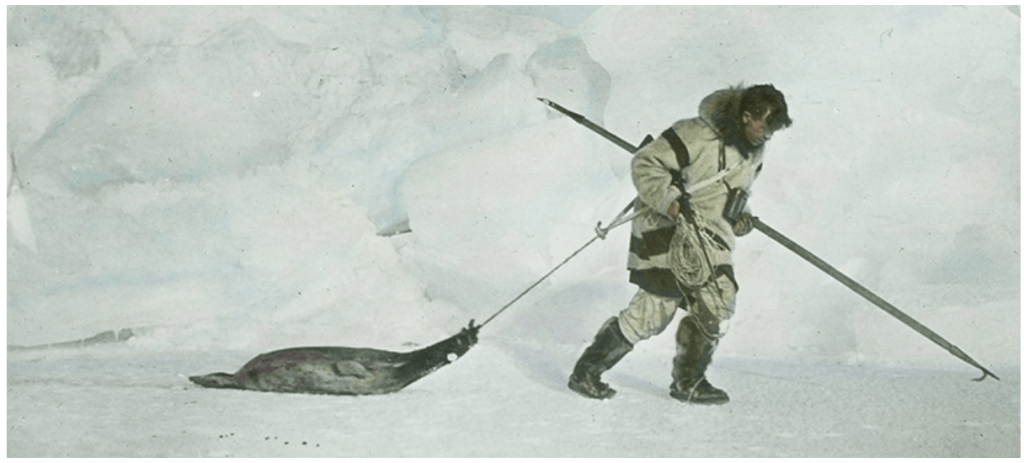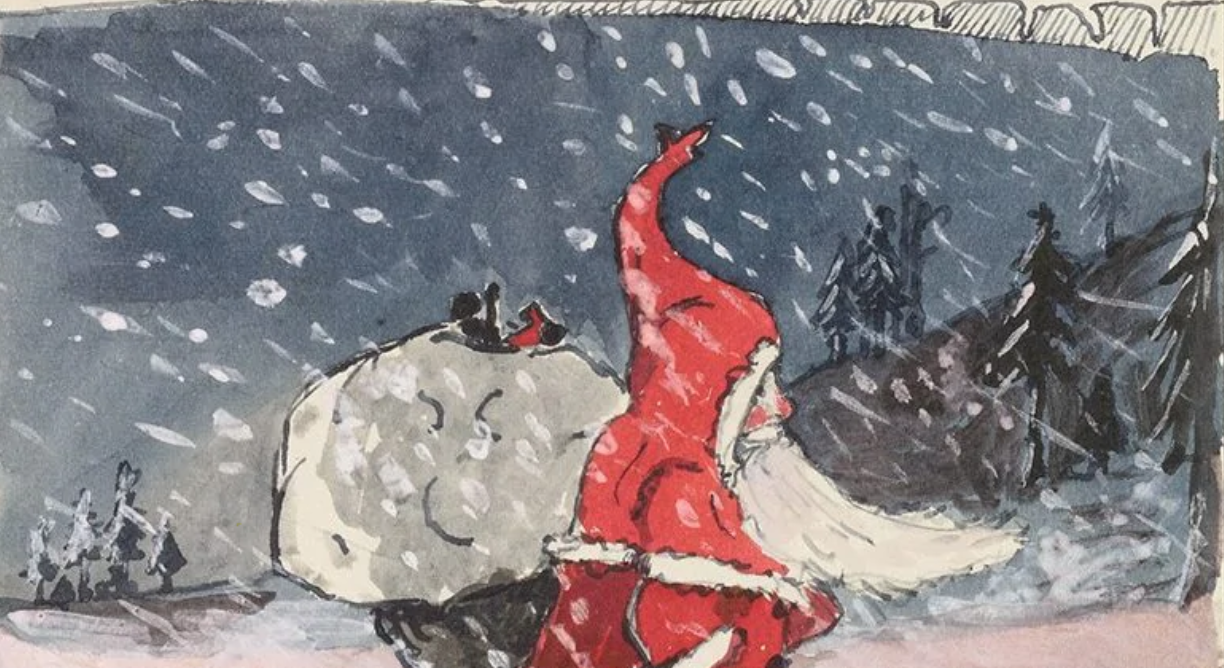Heroes and Villains No 5 Vilhjálmur Stefánsson
Herschel Island, The Yukon. 1906:
Unlike the rest of his colleagues, the explorer and anthropologist Vilhjálmur Stefánsson decided to walk rather than sail to the first base on the Beaufort Sea coast of North-west Canada. Stefánsson thought the expedition’s schooner, The Duchess of Bedford, was unlikely to be able to complete the journey, and it turned out he was right. The sea ice proved to be impassable. In his account ‘My life with the Eskimo’ he wrote I found myself… set down two hundred miles north of the polar circle, with a summer suit of clothing, a camera, some notebooks, a rifle, and about two hundred rounds of ammunition, facing an Arctic winter, where my only shelter would have to be the roof of some hospitable Eskimo house.
Stefánsson was delighted. Being obliged to live with the Inuit people is what he had wanted all along. His anthropological studies were greatly helped by his total immersion within their society. This wasn’t Stefánsson’s first voyage into the polar region and it certainly wasn’t his last. During his time in the Canadian Arctic Stefánsson lived like an Inuit and importantly he ate like them too. This meant subsisting almost exclusively on a diet of fish, whale and seal meat, game and eggs, but with very little plant foods and no dairy products. Meat and fish constituted around 90% of the Inuit diet and they would thrive on this exclusively for around nine months each year. While he was on this plant-free high-fat diet Stefánsson insisted he never felt healthier.

Vilhjálmur Stefánsson was born in Canada to parents of Icelandic extraction. Times were very tough and the family was eventually forced to move south to North Dakota in the United States. Vilhjálmur (originally known as William) did well eventually studying and teaching at the Harvard School of Anthropology. His first expedition north was not to Iceland b. But the Canadian Arctic. This region and its Inuit peoples were his fascination. He visited the region several times including a four- year trip 1913-1916. On one of his expeditions his sponsors offered to supply all his dietary needs and supplies by ship. Stefánsson declined, preferring to live off the land and the sea.
Not surprisingly Stefánsson’s dietary observations and claims, formed while living with and like his Inuit hosts, excited considerable skepticism and debate. And so, in the late 1920s an eminent group of academic physicians decided to put them to the test. Stefánsson and his arctic explorer colleague Rudolph Anderson admitted themselves to Bellevue Hospital, New York and began a one-year experiment during which they only ate nothing but meat; no fruit, no vegetables. The diet was around 80% fat and 20% protein. The only carbohydrates present were in the form of traces of glycogen in liver and muscle meats. They ate as much as they pleased and with no regard to their calorie intake. They were observed as in-patients initially but were later allowed to return home on condition that their dietary intakes were verified by independent observers.

The results, were published in The Journal of Biological Chemistry in 1930, and were astounding. Both men remained in perfect health. No deficiency disorders developed; in particular, no scurvy. Their kidneys survived despite the relatively high protein intake (actually 20% is not high at all). Their bowels continued to function despite the total lack of plant fibre. Their observers remarked that their poo ceased to smell offensively. The only slight problem encountered was when Stefánsson was given very lean cuts of meat to eat. A stomach upset followed and he felt less well. It resolved rapidly when the high fat levels in his diet was restored. They initially lost a little weight but it, like their body temperature and blood mineral levels, seemed to find an easy natural balance; this was homeostasis in action. Contrary to general expectation the Inuit diet seemed to work very well for those of European ancestry too, even though it was not something that they as a race had evolved to subsist on. Perhaps Despite removing all carbs from their diets, a very high-fat diet allowed Stefánsson and Anderson’s body chemistry to function normally. without a socking great insulin spanner jamming up the works?
Fascinating though the results of the study were, and intriguing as Stefánsson’s descriptions of Inuit life was, the effect of their one-year study on the world of nutrition was in the end negligible. The nutritional establishment carried on regardless, recommending the same old calorie- controlled ‘balanced diet’ with plenty of fruit, cereal and vegetables. Stefánsson and Anderson’s good health on their low/no-carb diets were ignored. In 1990 Sheffield Drs Frank Ryan and Reg Saynor published a book entitled The Eskimo Diet – how to avoid a heart attack. But the concept underpinning their diet related to the beneficial effects of fish oils, Omega-3s in particular. The low- carb character of real Inuit cuisine was lost in favour of a single nutritionally magic bullet – fish oil.
That two Europeans could thrive for months and even years on a no-carb diet, enjoying excellent health, was for nutritional science a paradox; a verified observation that stands in contradiction to conventional wisdom. Faced with such a paradox enquiring minds in academic departments of nutritional science would, you may have thought, have felt prompted to explore further. That neither man developed scurvy, a potentially fatal vitamin C deficiency condition, was also paradoxical. Scurvy had cursed many polar expeditions including those to the Antarctic conducted by Shackleton and Scott in 1902.
For the sake of argument, a paradox might be considered as an observation which appears to contradict, or at the very least not fit in with, a currently accepted explanation or theory. Science abounds with paradoxes, indeed paradoxes in science are stimulants for further investigation and can potentially lead to deeper understanding. Frequently, paradoxical observations act like grit in the oyster which have the potential to develop into pearls of wisdom. The same cannot be said so confidently of nutrition science. When faced with a piece of evidence that stands in contradiction to established belief there is a good chance it will be ignored. Rather than beckoning those with enquiring minds further along the path of discovery, the paradoxical observation may be considered as awkward, inconvenient, dangerous and erroneous. Paradoxes generally just get an academic pat on the head before being They are as a rule either explained away or just simply ignored. And that typical feature of human behaviour, to ignore awkward facts, is something demonstrated over and over by our supposedly dispassionate nutritional scientists.

